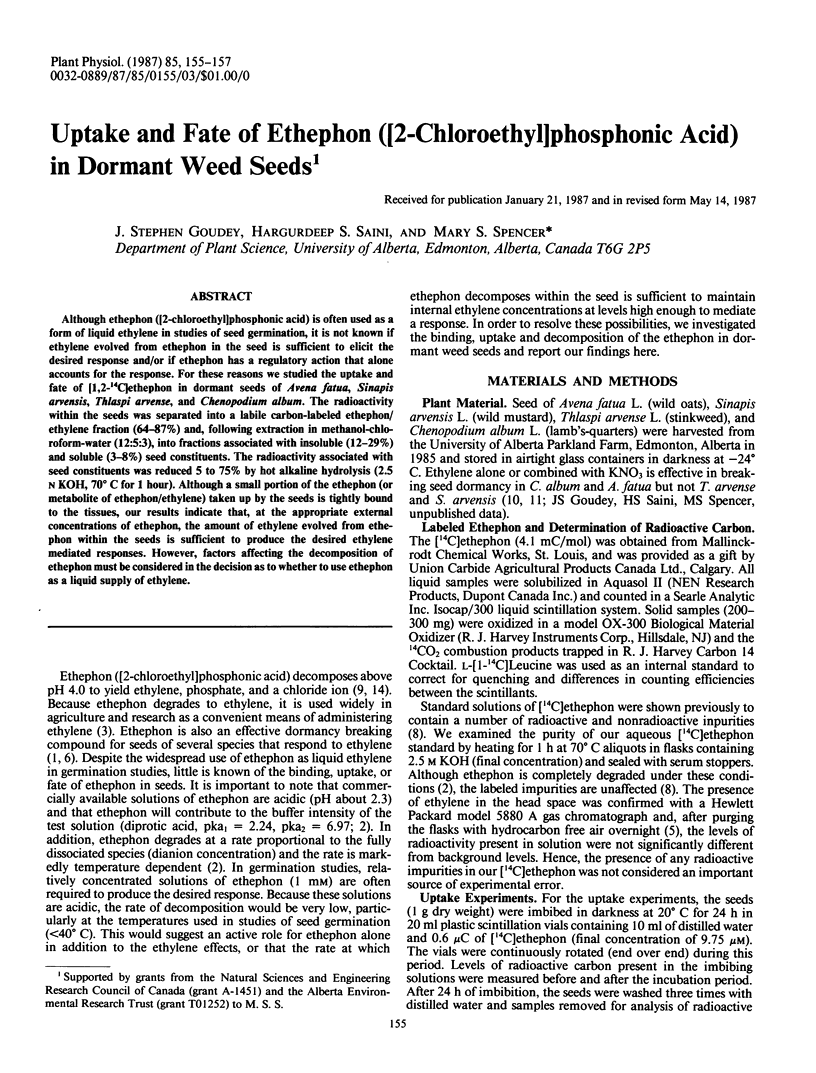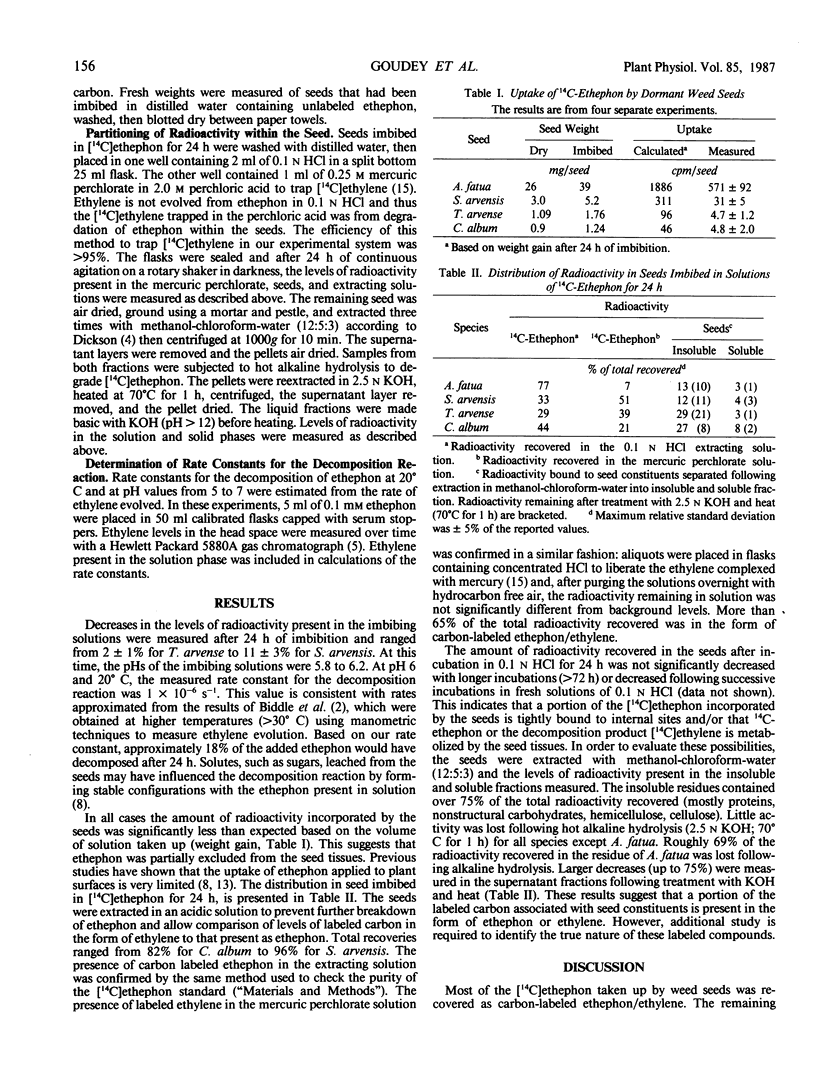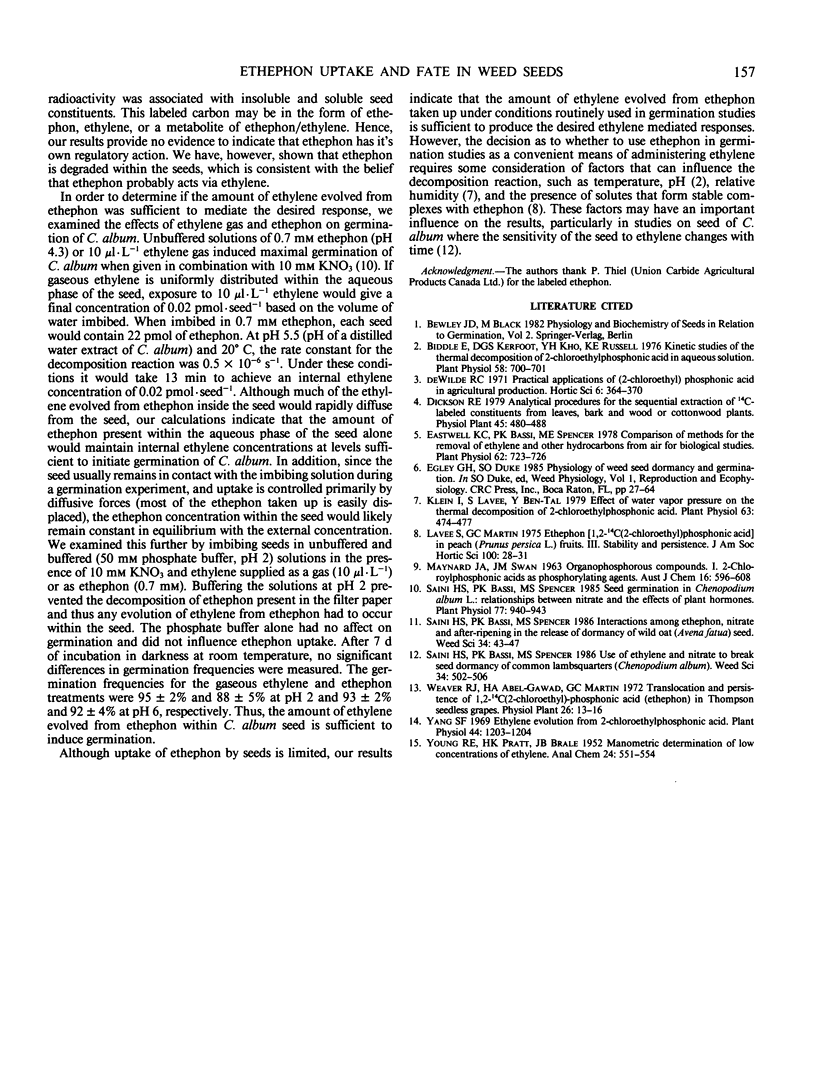Abstract
Although ethephon ([2-chloroethyl]phosphonic acid) is often used as a form of liquid ethylene in studies of seed germination, it is not known if ethylene evolved from ethephon in the seed is sufficient to elicit the desired response and/or if ethephon has a regulatory action that alone accounts for the response. For these reasons we studied the uptake and fate of [1,2-14C]ethephon in dormant seeds of Avena fatua, Sinapis arvensis, Thlaspi arvense, and Chenopodium album. The radioactivity within the seeds was separated into a labile carbon-labeled ethephon/ethylene fraction (64-87%) and, following extraction in methanol-chloroform-water (12:5:3), into fractions associated with insoluble (12-29%) and soluble (3-8%) seed constituents. The radioactivity associated with seed constituents was reduced 5 to 75% by hot alkaline hydrolysis (2.5 n KOH, 70° C for 1 hour). Although a small portion of the ethephon (or metabolite of ethephon/ethylene) taken up by the seeds is tightly bound to the tissues, our results indicate that, at the appropriate external concentrations of ethephon, the amount of ethylene evolved from ethephon within the seeds is sufficient to produce the desired ethylene mediated responses. However, factors affecting the decomposition of ethephon must be considered in the decision as to whether to use ethephon as a liquid supply of ethylene.
Full text
PDF


Selected References
These references are in PubMed. This may not be the complete list of references from this article.
- Biddle E., Kerfoot D. G., Kho Y. H., Russell K. E. Kinetic studies of the thermal decomposition of 2-chloroethylphosphonic Acid in aqueous solution. Plant Physiol. 1976 Nov;58(5):700–702. doi: 10.1104/pp.58.5.700. [DOI] [PMC free article] [PubMed] [Google Scholar]
- Eastwell K. C., Bassi P. K., Spencer M. E. Comparison and evaluation methods for the removal of ethylene and other hydrocarbons from air for biological studies. Plant Physiol. 1978 Nov;62(5):723–726. doi: 10.1104/pp.62.5.723. [DOI] [PMC free article] [PubMed] [Google Scholar]
- Klein I., Lavee S., Ben-Tal Y. Effect of water vapor pressure on the thermal decomposition of 2-chloroethylphosphonic Acid. Plant Physiol. 1979 Mar;63(3):474–477. doi: 10.1104/pp.63.3.474. [DOI] [PMC free article] [PubMed] [Google Scholar]
- Saini H. S., Bassi P. K., Spencer M. S. Seed Germination in Chenopodium album L: Relationships between Nitrate and the Effects of Plant Hormones. Plant Physiol. 1985 Apr;77(4):940–943. doi: 10.1104/pp.77.4.940. [DOI] [PMC free article] [PubMed] [Google Scholar]
- Yang S. F. Ethylene evolution from 2-chloroethylphosphonic Acid. Plant Physiol. 1969 Aug;44(8):1203–1204. doi: 10.1104/pp.44.8.1203. [DOI] [PMC free article] [PubMed] [Google Scholar]


